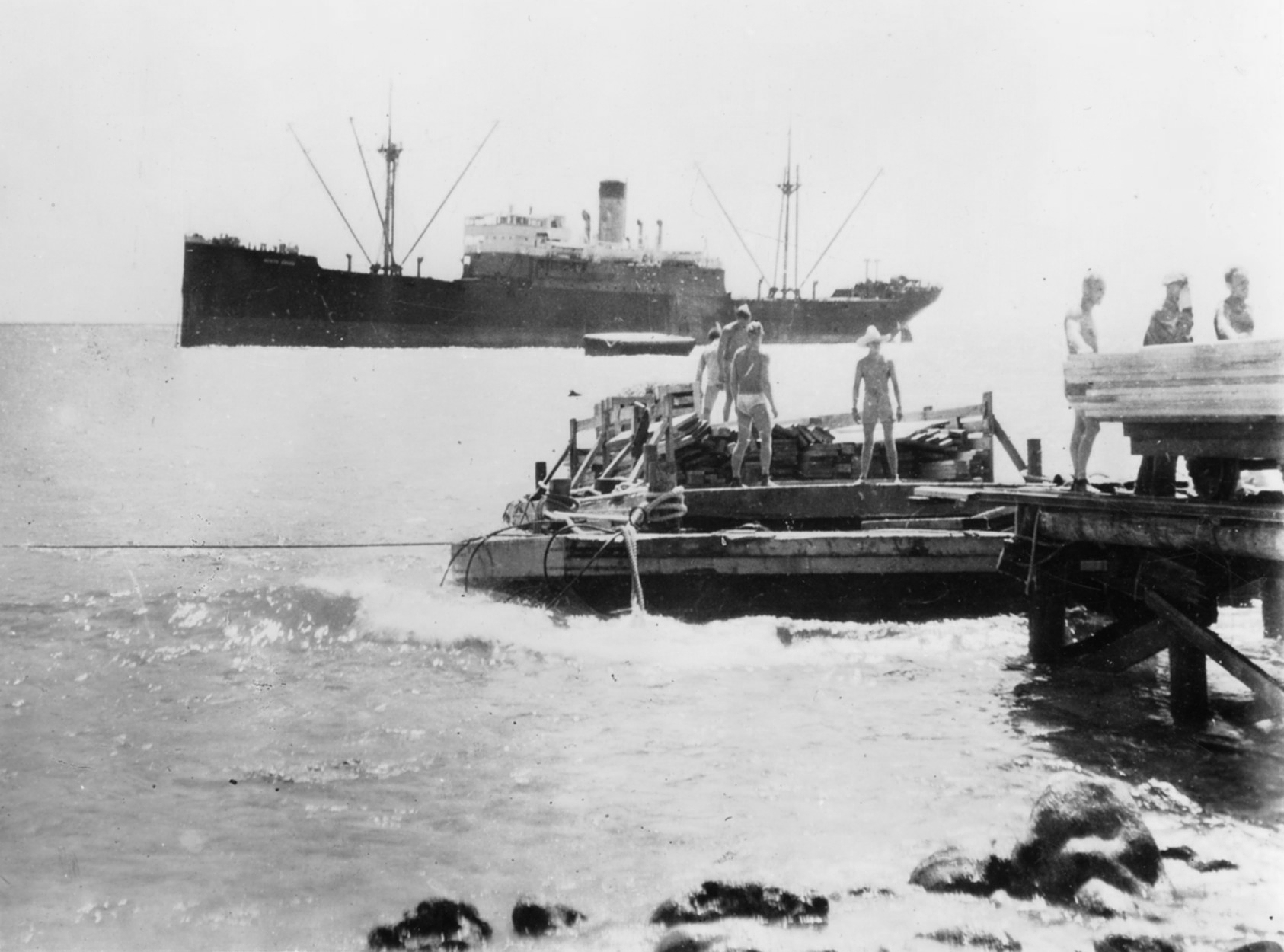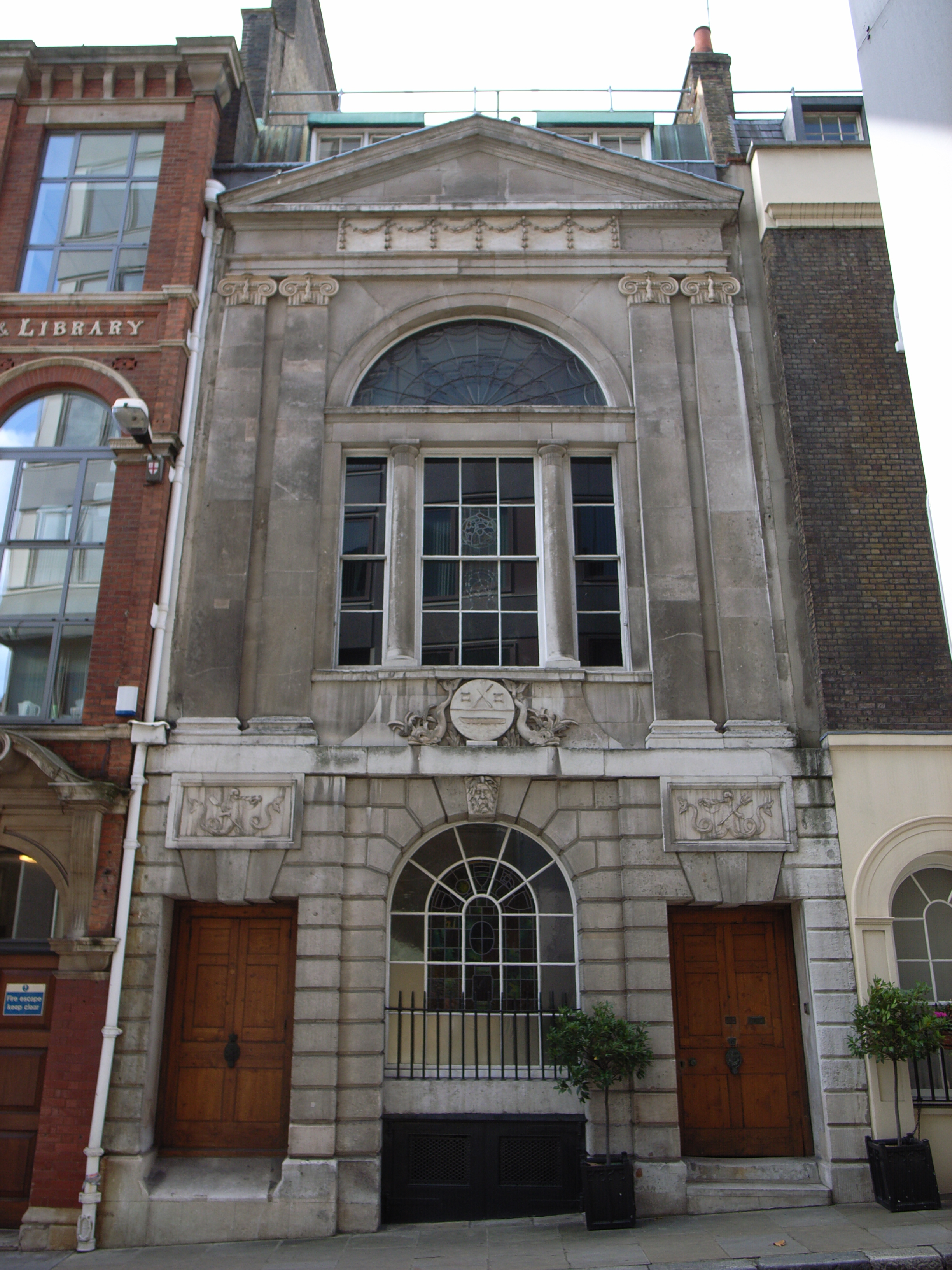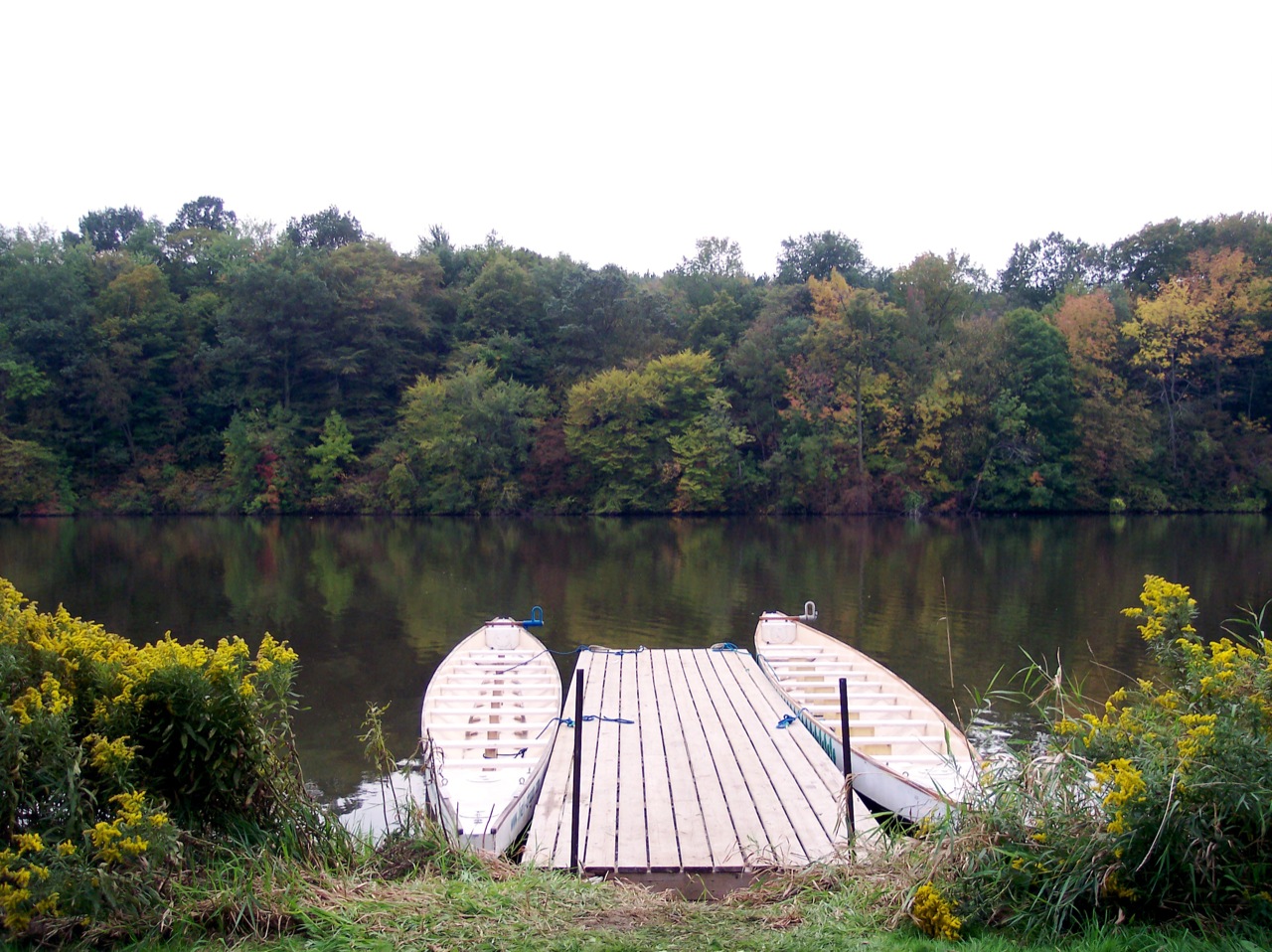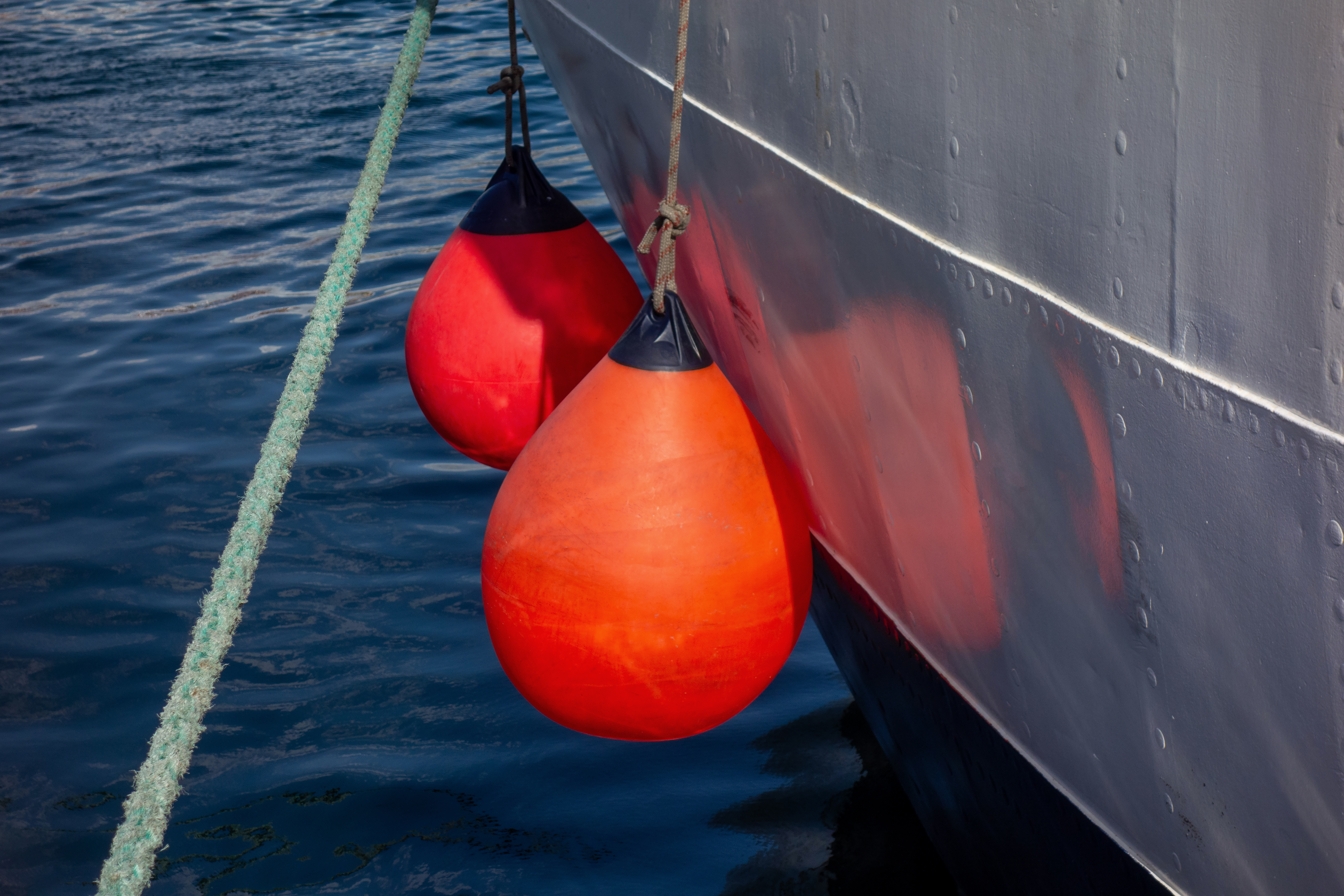|
Lightering
Lightering (also called lighterage) is the process of transferring cargo between vessels of different sizes, usually between a barge (lighter) and a bulker or oil tanker. Lightering is undertaken to reduce a vessel's draft so it can enter port facilities that cannot accept large fully-loaded ocean-going vessels. Lightering can also refer to the use of a lighter barge for any form of short-distance transport, such as to bring railroad cars across a river. In addition, lightering can refer to the process of removing oil or other hazardous chemicals from a compromised vessel to another vessel to prevent an oil spill. History Lightering was practiced for all types of cargo for centuries. Prior to the 19th century introduction of steamships too large to enter some of the ports they intended to serve, in which case lightering became necessary to reduce the vessels' draft sufficiently to enter the port, cargoes ranging from water to ships' stores (food, livestock, misc. supplies), to gun ... [...More Info...] [...Related Items...] OR: [Wikipedia] [Google] [Baidu] |
Oil Tanker
An oil tanker, also known as a petroleum tanker, is a ship designed for the bulk transport of oil or its products. There are two basic types of oil tankers: crude tankers and product tankers. Crude tankers move large quantities of unrefined crude oil from its point of extraction to refineries. Product tankers, generally much smaller, are designed to move refined products from refineries to points near consuming markets. Oil tankers are often classified by their size as well as their occupation. The size classes range from inland or coastal tankers of a few thousand metric tons of deadweight (DWT) to the mammoth ultra large crude carriers (ULCCs) of . Tankers move approximately of oil every year.UNCTAD 2006, p. 4. Second only to pipelines in terms of efficiency,Huber, 2001: 211. the average cost of transport of crude oil by tanker amounts to only US. Some specialized types of oil tankers have evolved. One of these is the naval replenishment oiler, a tanker which can fuel a ... [...More Info...] [...Related Items...] OR: [Wikipedia] [Google] [Baidu] |
Lighterman
A lighterman is a worker who operates a lighter, a type of flat-bottomed barge, which may be powered or unpowered. In the latter case, today it is usually moved by a powered tug. The term is particularly associated with the highly skilled men who operated the unpowered lighters moved by oar and water currents in the Port of London. Lightermen in the Port of London History Lightermen were one of the most characteristic groups of workers in London's docks during the heyday of the Port of London, but their trade was eventually rendered largely obsolete by changes in shipping technology. They were closely associated with the watermen, who carried passengers, and in 1700 joined the Company of Watermen to form the Company of Watermen and Lightermen. This is not, strictly speaking, a livery company but a "City Company Without Grant of Livery", formed in 1700 by Act of Parliament. The Guild continues to license watermen and lightermen working on the River Thames. Watermans' Hall i ... [...More Info...] [...Related Items...] OR: [Wikipedia] [Google] [Baidu] |
Dock (maritime)
A dock (from Dutch ''dok'') is the area of water between or next to one or a group of human-made structures that are involved in the handling of boats or ships (usually on or near a shore) or such structures themselves. The exact meaning varies among different variants of the English language. "Dock" may also refer to a dockyard (also known as a shipyard) where the loading, unloading, building, or repairing of ships occurs. History The earliest known docks were those discovered in Wadi al-Jarf, an ancient Egyptian harbor, of Pharaoh Khufu, dating from c.2500 BC located on the Red Sea coast. Archaeologists also discovered anchors and storage jars near the site. A dock from Lothal in India dates from 2400 BC and was located away from the main current to avoid deposition of silt. Modern oceanographers have observed that the ancient Harappans must have possessed great knowledge relating to tides in order to build such a dock on the ever-shifting course of the Sabarmati, a ... [...More Info...] [...Related Items...] OR: [Wikipedia] [Google] [Baidu] |
Lighterage Clause
A charterparty (sometimes charter-party) is a maritime contract between a shipowner and a "charterer" for the hire of either a ship for the carriage of passengers or cargo, or a yacht for pleasure purposes. Charter party is a contract of carriage of goods in the case of employment of a (charter boat). It means that the charter party will clearly and unambiguously set out the rights and responsibilities of the ship owner and the charterers and any subsequent dispute between them will be settled in the court of law or any agreed forum with reference to the agreed terms and conditions as embodied in the charter party. The name "charterparty" is an anglicisation of the French ''charte partie'', or "split paper", i.e. a document written in duplicate so that each party retains half. Types of charterparty There are three main types of charterparty: time, voyage and demise and another. * In a demise (or bareboat) charter, the charterer takes responsibility for the crewing and mainten ... [...More Info...] [...Related Items...] OR: [Wikipedia] [Google] [Baidu] |
Lighter Aboard Ship
The lighter aboard ship (LASH) system refers to the practice of loading barges (lighters) aboard a bigger vessel for transport. It was developed in response to a need to transport lighters, a type of (usually but not always) unpowered barge, between inland waterways separated by open seas. Lighters are typically towed or pushed around harbors, canals or rivers and cannot be relocated under their own power. The carrier ships are known variously as LASH carriers, barge carriers, kangaroo ships or lighter transport ships. History Development During World War II the United States Seabees developed a pontoon assembly for moving cargo from transports to assault beachheads that meet the needs at the time that was the forerunner to the LASH system. By the 1950s, the needs of cargo transport customers were no longer being met by the break bulk system of loading individual cargo pieces into a ship's hold. The dimensions and shapes of cargo pieces varied widely, and the ISO stan ... [...More Info...] [...Related Items...] OR: [Wikipedia] [Google] [Baidu] |
Berth (moorings)
A berth is a designated location in a port or harbour used for mooring vessels when they are not at sea. Berths provide a vertical front which allows safe and secure mooring that can then facilitate the unloading or loading of cargo or people from vessels. Locations in a port Berth is the term used in ports and harbors for a designated location where a vessel may be moored, usually for the purposes of loading and unloading. Berths are designated by the management of a facility (e.g., port authority, harbor master). Vessels are assigned to berths by these authorities. Most berths are alongside a quay or a jetty (large ports) or a floating dock (small harbors and marinas). Berths are either general or specific to the types of vessel that use them. The size of the berths varies from for a small boat in a marina to over for the largest tankers. The rule of thumb is that the length of a berth should be roughly 10% longer than the longest vessel to be moored at the berth. Ber ... [...More Info...] [...Related Items...] OR: [Wikipedia] [Google] [Baidu] |
Roll-on/roll-off Discharge Facility
A roll-on/roll-off discharge facility (RRDF) is a floating platform that provides a roadway between a ship's ramp and lighterage. It is constructed by connecting multiple causeway sections. Ports equipped with roll-on/roll-off wharfs include: See also * Roll-on/roll-off Roll-on/roll-off (RORO or ro-ro) ships are cargo ships designed to carry wheeled cargo, such as cars, motorcycles, trucks, semi-trailer trucks, buses, trailers, and railroad cars, that are driven on and off the ship on their own wheels or using ... Sources Titan International Shipping/Roll-on Roll-off Wharfs Port infrastructure Maritime transport {{Port-stub ... [...More Info...] [...Related Items...] OR: [Wikipedia] [Google] [Baidu] |
Fender (boating)
In boating, a fender is a bumper used to absorb the kinetic energy of a boat or vessel berthing against a jetty, quay wall or other vessel. Fenders, used on all types of vessels, from cargo ships to cruise ships, ferries and personal yachts, prevent damage to vessels and berthing structures. To do this, fenders have high energy absorption and low reaction force. Fenders are typically manufactured out of rubber, foam elastomer or plastic. Rubber fenders are either extruded or made in a mold. The type of fender that is most suitable for an application depends on many variables, including dimensions and displacement of the vessel, maximum allowable stand-off, berthing structure, tidal variations and other berth-specific conditions. The size of the fender unit is based on the berthing energy of the vessel which is related to the square of the berthing velocity. Historically, fenders were knotted from rope in a variety of patterns and shapes. Often damaged lines would be used for t ... [...More Info...] [...Related Items...] OR: [Wikipedia] [Google] [Baidu] |
Containerization
Containerization is a system of intermodal freight transport using intermodal containers (also called shipping containers and ISO containers). Containerization is also referred as "Container Stuffing" or "Container Loading", which is the process of unitization of cargoes in exports. Containerization is the predominant form of unitization of export cargoes, as opposed to other systems such as the barge system or palletization. The containers have standardized dimensions. They can be loaded and unloaded, stacked, transported efficiently over long distances, and transferred from one mode of transport to another—container ships, rail transport flatcars, and semi-trailer trucks—without being opened. The handling system is completely mechanized so that all handling is done with cranes and special forklift trucks. All containers are numbered and tracked using computerized systems. Containerization originated several centuries ago but was not well developed or widely applied unti ... [...More Info...] [...Related Items...] OR: [Wikipedia] [Google] [Baidu] |
Lighter (barge)
A lighter is a type of flat-bottomed barge used to transfer goods and passengers to and from moored ships. Lighters were traditionally unpowered and were moved and steered using long oars called "sweeps" and the motive power of water currents. They were operated by skilled workers called lightermen and were a characteristic sight in London's docks until about the 1960s, when technological changes made this form of lightering largely redundant. Unpowered lighters continue to be moved by powered tugs, however, and lighters may also now themselves be powered. The term is also used in the Lighter Aboard Ship (LASH) system. The name itself is of uncertain origin, but is believed to possibly derive from an old Dutch or German word, ''lichten'' (to lighten or unload). In Dutch, the word ''lichter'' is still used for smaller ships that take over goods from larger ships. Lighters, albeit powered ones, were proposed to be used in 2007 at Port Lincoln and Whyalla in South Australia to load ... [...More Info...] [...Related Items...] OR: [Wikipedia] [Google] [Baidu] |
Bulk Carrier
A bulk carrier or bulker is a merchant ship specially designed to transport unpackaged bulk cargo — such as grains, coal, ore, steel coils, and cement — in its cargo holds. Since the first specialized bulk carrier was built in 1852, economic forces have led to continued development of these ships, resulting in increased size and sophistication. Today's bulk carriers are specially designed to maximize capacity, safety, efficiency, and durability. Today, bulk carriers make up 21 percent of the world's merchant fleets, and they range in size from single-hold mini-bulk carriers to mammoth ore ships able to carry 400,000 metric tons of deadweight (DWT). A number of specialized designs exist: some can unload their own cargo, some depend on port facilities for unloading, and some even package the cargo as it is loaded. Over half of all bulk carriers have Greek, Japanese, or Chinese owners, and more than a quarter are registered in Panama. South Korea is the largest single bu ... [...More Info...] [...Related Items...] OR: [Wikipedia] [Google] [Baidu] |








